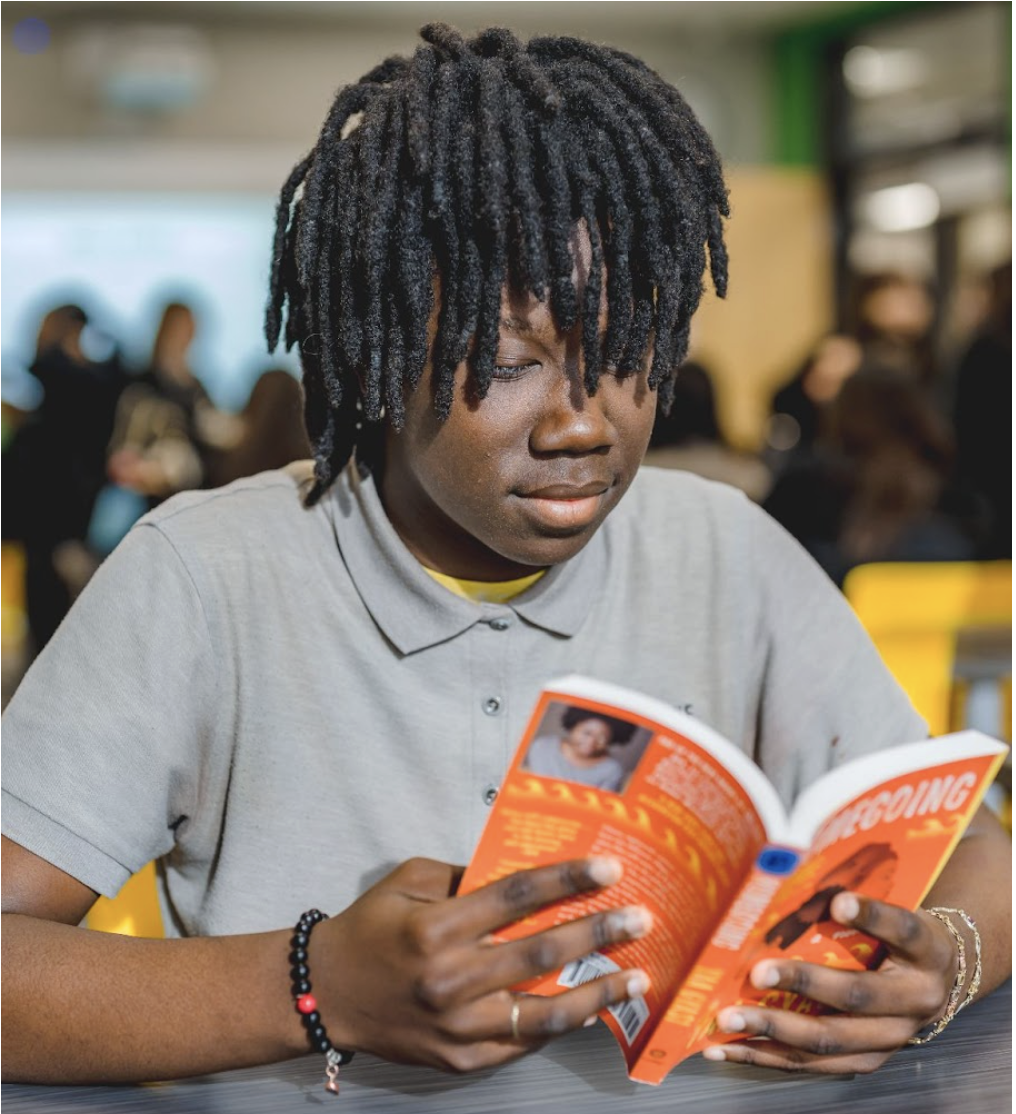Fluency Practice that Engages Adolescents

Last week, I explained why structured and systematic fluency practice is the key to unlocking high school students’ ability to read and enjoy complex text. This week, I want you to hear what effective fluency practice sounds like.
When students hear a passage of rich, complex text read by a skilled reader, rehearse and perform that passage themselves, and get feedback on their reading, they internalize how clauses and phrases in complex text work together to reveal a character’s motivations or ratchet up the plot’s tension. Unfortunately, current middle and high school fluency programs, often borrowed from elementary schools, encourage students to ignore the nuances of language in complex text and just read as quickly as possible.
Riveting Results has developed its own approach to fluency that unleashes the playfulness and expressiveness of adolescents. By embedding and carefully breaking down all aspects of fluency practice—listening, rehearsing, performing, and receiving feedback—within an easy-to-use software application, our program enables teachers to personalize fluency instruction for each student while teaching the same complex text to the entire class.
Below are three recordings of David (the student’s name has been changed), a student at a summer school program that used Riveting Results, practicing his fluency. He is reading from The Secret of the Yellow Death by Suzanne Jurmain. This book describes how American and Cuban scientists risked death to find the source of yellow fever.
When you listen to the first excerpt, from August 1, you will probably notice David’s fast delivery and his monotone. He is clearly disengaged from the meaning of the text, a story about how a brave scientist pursued an unpopular theory with conviction and precision.
He also skips words, mispronounces many words, and even substitutes incorrect words for the words in the text—but we don’t need to count each error, label it, and mark these mistakes against him like we would if we were measuring words correct per minute, the standard fluency measure. We already know just from David’s flat tone that he needs to practice more to take in meaning from the text. Alerting him to his every mistake would make him want to practice less. Unless David has an unusual disability, counting mistakes doesn’t give us the additional information to help David get better and, in fact, distracts the student and teacher from the joys of reading. I’ll write more about effective fluency feedback next week.
In the second excerpt, recorded on August 3 (“August 3, Part A”), David has had a couple of days to practice fluency with different passages and a number of opportunities to rehearse this new passage. While he begins this passage by reading very quickly and with little tonal variation, David’s tone gradually sharpens as he senses something problematic about the scientist’s behavior. When he reads, “And maybe that was true,” David’s skepticism emerges. His tone suggests that the scientist is hiding something. And you’ll notice that he is no longer skipping words and substituting incorrect words the way he did in the first excerpt.
By the third excerpt, also recorded on August 3 (“August 3, Part B”), David has become far more invested in the text, channeling the concern of the scientist’s wife. Notice how he draws out and raises his voice when he says “lie” in the sentence “Did he lie because his family might disapprove of such a dangerous experiment?” Here, David has discovered that he has insight into the scientist’s intentions. In fact, he sounds like an older brother scolding his sibling for dissembling. He does make a couple of mistakes, but the fact that he goes back and corrects himself shows that he is now committed to reading with precision.
Through his fluency practice over these three days, David forged a strong connection with the scientists in the book. He showed himself and his teacher that when he slows down, he can read complex text with accuracy and empathy.
After doing these activities with over a thousand adolescents during the past five years, we see similar patterns developing in most of these students. We are currently engaged in a study to find out more about how greater engagement in fluent reading improves comprehension across a diverse group of students.
Next week, I’ll show you the critical role of the personalized feedback that energized and directed David’s practice.
We want to know what you think.
We recommend you read these next
Meet The Team
The Riveting Results program works because it incorporates feedback from dozens of educators experienced in the classroom and in running schools. Unlike other programs that primarily use academic experts to review materials, Riveting Results gets feedback from educators who have actually used Riveting Results in the classroom to develop students reading and writing performance.
contact us



































